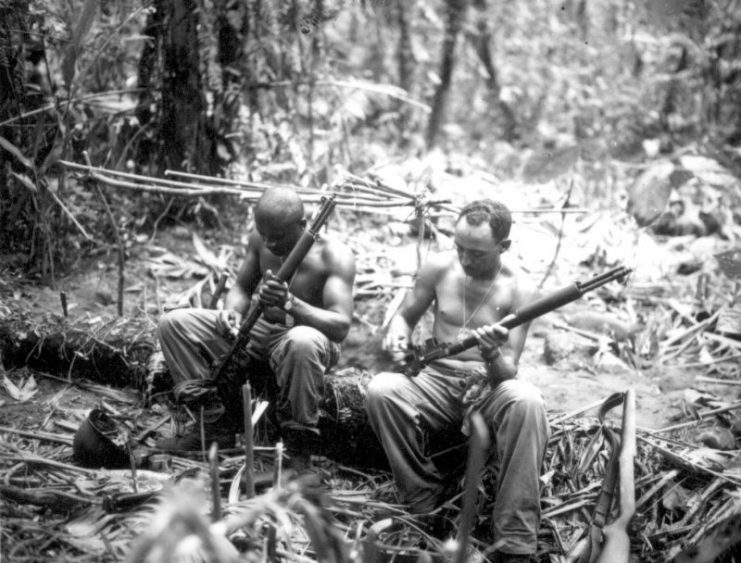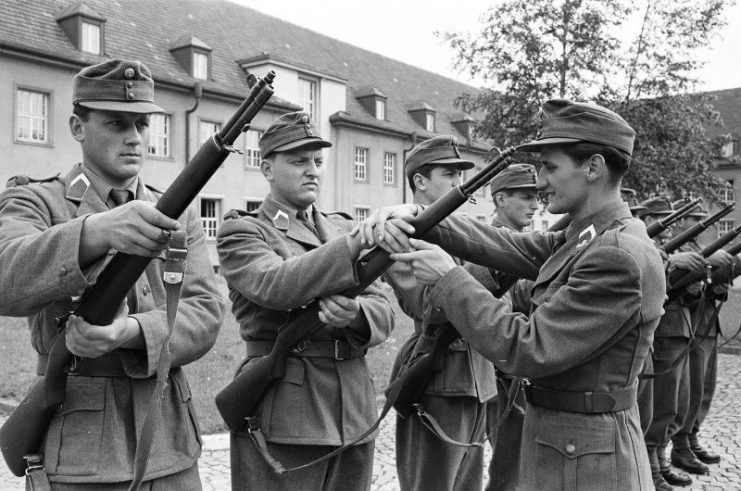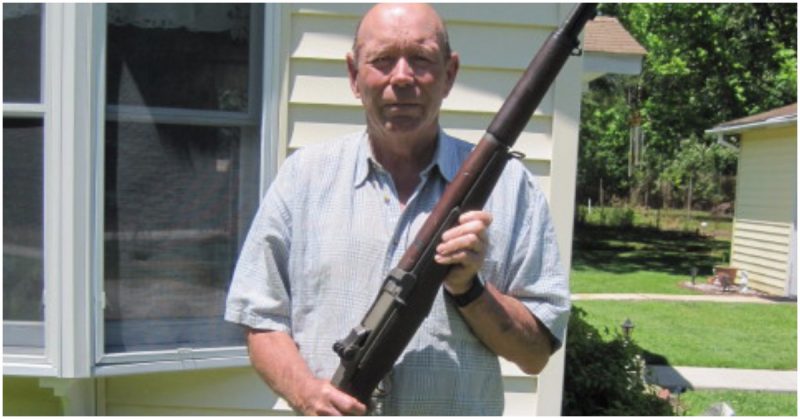Marine recruit Pat Farmer was assigned the weapon at the Marine Corps Recruit Depot in San Diego in 1960. He signed the receipt card for the M1 serial number 4305638 and carried it for a year until he transferred to flight school. In 2013 Farmer ran across the old receipt and decided to contact the Civilian Marksmanship Program, a non-profit government organization, to find out if the rifle was still in government stocks. Happily, it was.
The Civilian Marksmanship Program researches requests for historical guns and at present are searching for over thirty missing guns. It is a treat to be able to match a serial number to a recovered gun as it is very uncommon to do so. They keep requests on file and do periodic checks. Many M1s were made, used and turned back in by returning soldiers and the Civilian Marksmanship Program is still auctioning them online as government surplus. They have been tested, repaired and refurbished and some still show the wear and tear of battle.
Farmer’s M1 was still under the ownership of the government who inspected the gun and released it. Farmer was “elated” to be reunited with the rifle and claimed, “It felt familiar.” He has decided to keep it to pass on to his grandchildren.
Just in time for Veteran’s Day, another World War II Marine was also reunited with the M1 Garand rifle he carried in the conflict.
Dick Cowell enlisted at the age of eighteen. When he received his kit, he was instructed by his Commanding Officer that he must keep the rifle on his person at all times. It turned out to define his wartime career as Cowell was decorated with two sharpshooter medals.

The rifle was presented to Cowell, a ninety-year-old resident of Palm Springs, by his grandson after his son had searched for six months for the rifle. He had discovered the receipt Cowell had signed when the rifle was assigned to him during the war in his father’s desk.
The younger Cowell located the gun on an auction site for guns on the internet. He got into a bidding war with another person interested in the weapon, but Cowell was determined to return the firearm to his father and cast the winning bid.
The return of what the elder Cowell calls his “baby” brought back forgotten memories he is now sharing with his descendants.

General George S. Patton called the M1 Garand “the greatest battle implement ever devised” and it was considered a soldier’s third arm. It was created after World War I demonstrated the need for repeat shot weapons. Handguns and pistols didn’t stand up well to constant repeated firing. Inventors and gunsmiths were asked to submit designs for a repeating fire weapon that was lightweight enough to be carried but heavy duty enough to do significant damage.
https://youtu.be/r-KVu_jko3s
Canadian born John Cantius Garand resolved the problem by coming up with the .30 caliber M1. It was just over forty-three inches long with a barrel length of twenty-four inches and weighed about ten pounds. It had a range of about five hundred yards with a velocity of 853 meters per second and could fire about 45 rounds per minute. Garand was hired by the Springfield Armory in Massachusetts, the primary arms factory used by the United States government. In 1938 the first shipment of rifles was delivered. After field testing and learning what could be improved manufacturing was increased enough that the Winchester Repeating Arms Company was also enlisted to help. By the time the United States entered World War II in 1941, the M1 was the standard issue infantry weapon.
The M1 Garand was replaced in 1957 by the M14, an advance on speed and capacity. The M1 continued in use throughout the Korean conflict and into the war in Vietnam and has been rated by The National Rifle Association as the number one infantry rifle of all time.
